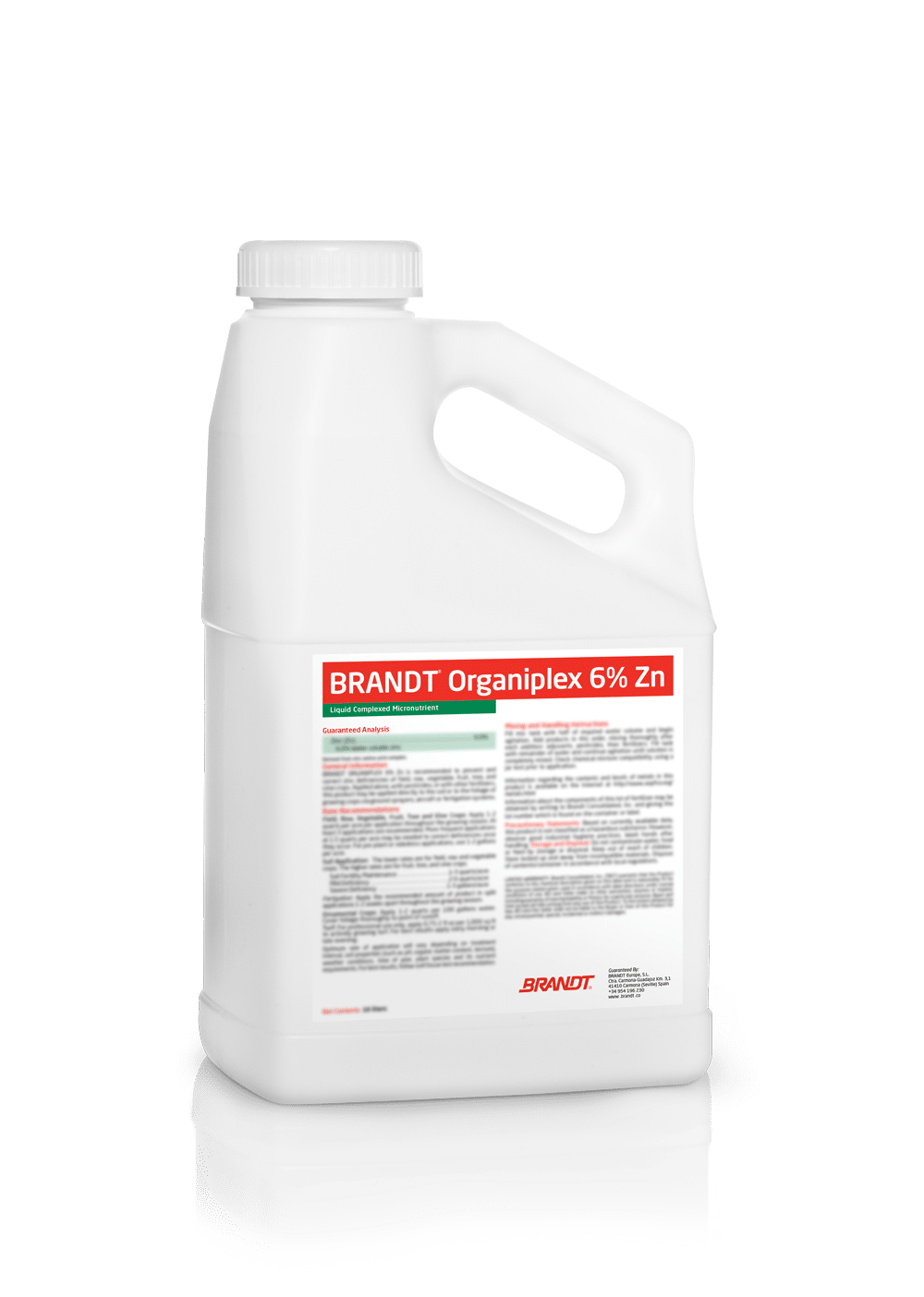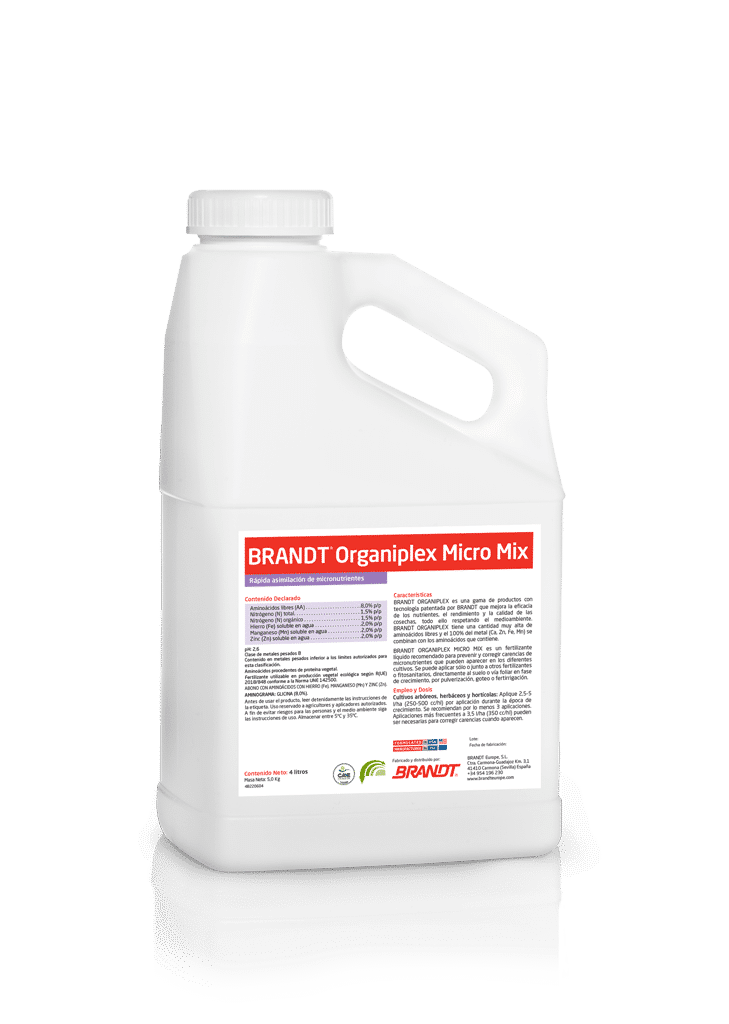BRANDT® Organiplex® Mn

BRANDT® Organiplex® Mn is an organic manganese-rich nutritional supplement developed from manganese amino acid complexes and sodium borate.
It is part of the BRANDT® Organiplex® foliar nutrient range, based on amino acids that are applied to the leaves of crops, giving them the basic components they need for protein synthesis. It also helps to promote plant growth, especially in stressful environmental conditions, such as hydric and saline stress. The application of an amino acid supplement can also increase synthesis and chlorophyll content.
In addition, the nutritional supplements in this organic line have a concentration of glycine combined with a variety of nutrients selected to meet the specific needs of each crop.
- Advantages
- Crops
- Applications and use
- Composition
- Nutritional Composition
- Sheets
Advantages
- Excellent foliar mobility
- High concentration of amino acids
- Clean product with long term stability
- Use in organic farming
- 100% metal combined with amino acids
Crops
Applications and use
Tree, herbaceous and horticultural crops:
Apply 2.5-5 l/ha (250-500 cc/hL) per application during the growing season.
At least 3 applications are recommended.
More frequent applications at 3.5 l/ha (350 cc/hl) may be necessary to correct deficiencies when they appear.
Fertigation:
The lowest dose is for extensive crops, row crops and horticultural crops.
The highest dose is for fruit trees and vineyards.
Maintenance of soil fertility: .. . . . . . . . . . . . . . . . . . . . . . 2-7 l/ha
Mild deficiency: . . . . . . . . . . . . . . . . . . . . . . . . . . . . . . . . . . . . . . . . . . 4,5-14 l/ha
Severe deficiency: . . . . . . . . . . . . . . . . . . . . . . . . . . . . . . . . . . . . . . . . . . 9-28 l/ha
Fertigation:
Apply the recommended dose in 1-2 weeks during the growing season.
Ornamental Crops:
Apply 1- 3 liters per 300 liters of water. Cover the foliage to the point of runoff.
Green areas:
For professional use only. Apply 25-75 ml/100 m2 to actively growing green areas.
For best results, apply in the early hours of the day or at the end of the day.
Composition
4 % Mn
8% free amino acids
Nutritional Composition
Manganese (Mn)




